My first experience with DC motors was for a small elevator I built as part of a school science project. Little did I know that day would mark the beginning of my journey with motor technology.
During testing, the motor worked perfectly, but it failed when it really mattered. I used wood to build the elevator shaft and a pulley system with strings to lift a cardboard box up and down. (Back then, I didn’t understand gear or pulley ratios, so the elevator functioned more like an ejector seat than a real elevator.)
For motion control, I used a battery, a switch, and a DC motor. Unfortunately, I ran out of battery power just before the presentation. In hindsight, I should have switched the battery right before the demo. Still, I passed the class because someone witnessed the elevator working and vouched for me.
That was my first encounter with a DC motor. Can you guess which type I used? We’ll come back to this later.
Types of DC Motors
There are two main types of DC motors: brushed and brushless. Both are permanent magnet DC motors, meaning they use a segmented permanent magnet rotor. The key difference is in their commutation method. One uses brushes, while the other doesn't. These motors are commonly used in speed control applications.
Driver or No Driver?
Brushed DC motors are self-commutated, meaning they don’t require a separate driver circuit. This makes them simpler to use in basic setups. Brushless DC motors, on the other hand, cannot self-commutate and need a driver circuit. This driver uses transistors to direct current to different winding coils, enabling precise control over the motor's operation.
Design & Operation
A DC motor works by energizing a set of electromagnets in its stator in sequence, creating rotation with its permanent magnet rotor. A north pole on the stator attracts the south pole on the rotor, which is the fundamental operating principle for all permanent magnet DC motors. However, the way they achieve this differs between brushed and brushless designs.
Here’s a look at what brushed and brushless motors look like inside. The image below shows a brushed motor with permanent magnets in the stator. While some models may place the magnets in the rotor, having the windings in the rotor can lead to less efficient heat dissipation compared to placing them in the stator.
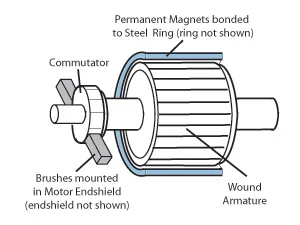 |
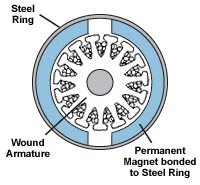 |
The top-left image shows the commutator and brushes, while the bottom-right image shows the same motor from the front view. An electrode in the form of brushes and a commutator is located inside the motor. The commutator rotates with the rotor, while the stator remains stationary. This motor has two permanent magnet poles—north and south.
When the power supply is connected to the stationary brushes, a specific set of electromagnets (coils) in the rotor is energized, attracting the next magnet pole and repelling the current one. As the rotor turns, the brushes mechanically switch to the next set of coils, repeating the process until the power is disconnected. The direction of the motor can be reversed by switching the polarity of the power supply.
The next image shows a brushless motor with permanent magnets on the rotor instead of the stator. This design allows the stator windings, which generate the most heat, to dissipate it more efficiently. This is one of the key advantages of brushless motors.
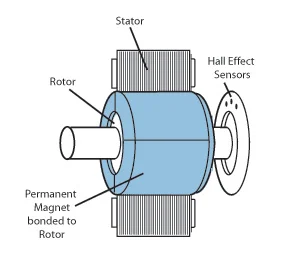 |
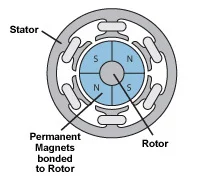 |
The top-left image shows the rotor, stator, and Hall Effect IC in the back of the motor. Unlike brushed motors, brushless motors use a dedicated driver circuit to monitor feedback and excite the stator poles electrically. They are also known as BLDC motors. Oriental Motor refers to them as "brushless motors" since they offer both AC and DC input drivers. The bottom-right image shows the front of the motor, which features six stator poles and four rotor poles.
The Hall Effect IC senses the permanent magnets in the rotor as it rotates, converting analog signals to digital and sending the data back to the driver. The driver then uses this information to determine the correct timing for phase excitation and regulate motor speed.
The image below shows how the driver's power circuit turns specific winding coils on and off using transistors. It illustrates a 12-step transistor excitation sequence with U, V, and W windings. After 12 steps, the cycle repeats.
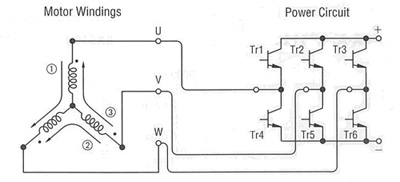
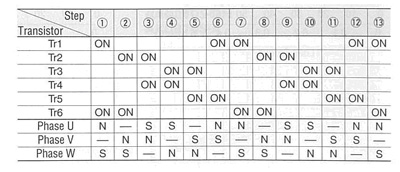
Most of our brushless motors now have 10 poles. The output resolution of the Hall Effect IC is calculated as the number of Hall Effect ICs multiplied by the number of rotor poles, resulting in 30 pulses per revolution. Some models, such as the BXII Series, include encoders for applications requiring higher precision.
Feedback
An important distinction between brushed and brushless motors is that brushless motors require feedback to operate properly. Feedback signals from the Hall Effect IC provide rotation data and are essential for accurate phase excitation timing.
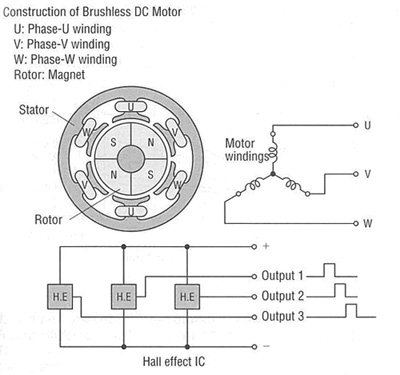
Advanced brushless motor drivers may offer unique features not found in simple brushed motor controllers, such as stored speed profiles and RS-485 communication. The feedback and current sensors in brushless motors can also provide torque limiting functions useful for tensioning applications. Although brushless motors typically cost more upfront, their benefits make them a strong choice for many applications.
Speed Control Performance
Both brushed and brushless motors offer similar performance. Their speed-torque curves are comparable. For brushed motors, speed and torque can be controlled by adjusting the input voltage. However, increasing voltage can sometimes cause excessive heat and reduce the motor's duty cycle.
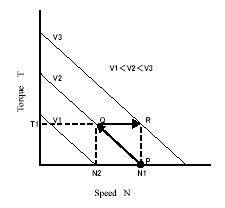
Brushless motor drivers optimize the speed-torque curve for consistent performance. To increase speed, the driver's excitation sequence must speed up accordingly.
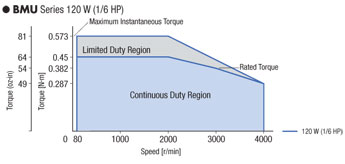
Summary/Comparison
You probably guessed that I used a brushed motor in my elevator project. While brushless motors are superior in many ways, a brushed motor worked well for my simple, one-time project. Plus, I didn’t know how to build a driver, and I needed to keep costs low.
Here’s a summary of the differences in benefits between brushed and brushless motors.
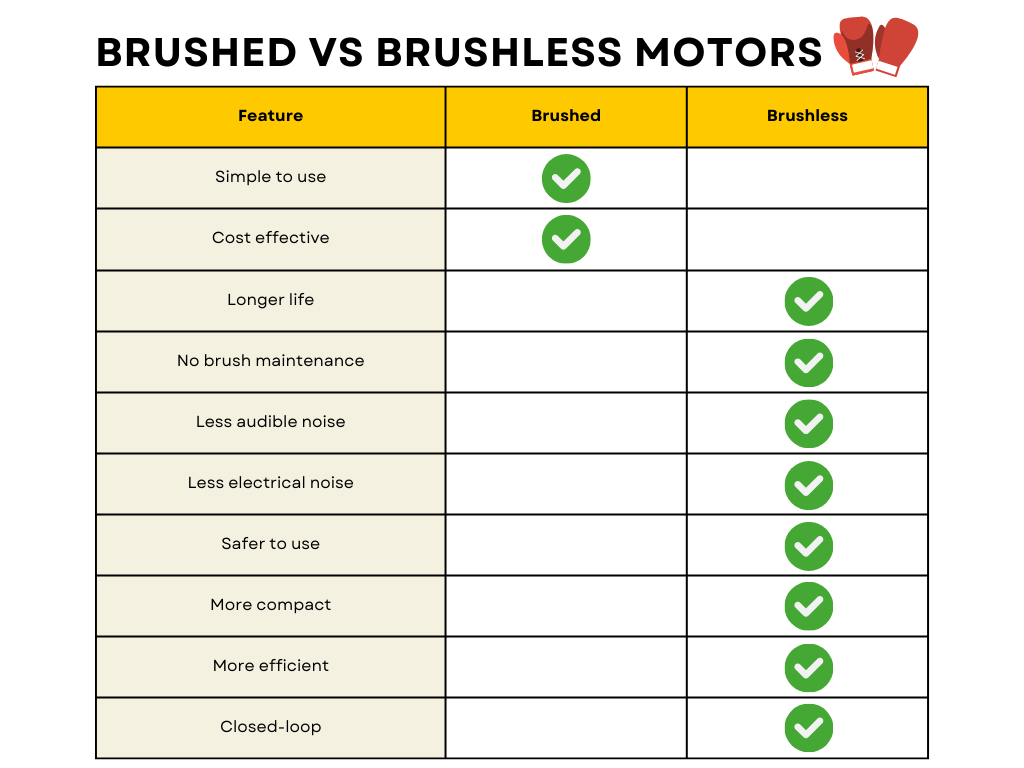
Brushed motors are simple and cost-effective but require regular maintenance due to the wear of the brushes. Sparks from brush commutation limit their use in certain environments. Brushless motors, on the other hand, have no brushes, making them more durable, quieter, and more efficient. They also offer better speed control and are ideal for high-performance applications.
Brushless motors are becoming increasingly popular due to their efficiency, longevity, and versatility. While brushed motors are still used in household appliances and vehicles, brushless motors are widely used in industrial applications such as conveyors and automated guided vehicles (AGVs).
FYI: Here’s a short article comparing brushless and brushed motors to AC motors.
 hbspt.cta._relativeUrls=true;hbspt.cta.load(2284573, '86829d5c-67a0-4766-b8bc-279c07b559c4', {"useNewLoader":"true","region":"na1"});
hbspt.cta._relativeUrls=true;hbspt.cta.load(2284573, '86829d5c-67a0-4766-b8bc-279c07b559c4', {"useNewLoader":"true","region":"na1"});
Enjoy a short video about our  hbspt.cta._relativeUrls=true;hbspt.cta.load(2284573, '5efb7e49-11af-47a9-8a74-3106cbd4e90a', {"useNewLoader":"true","region":"na1"}); .
hbspt.cta._relativeUrls=true;hbspt.cta.load(2284573, '5efb7e49-11af-47a9-8a74-3106cbd4e90a', {"useNewLoader":"true","region":"na1"}); .
Thanks for reading my article. Please subscribe for monthly updates.
1.2 Ton Mini Excavator XN12 with Japanese Yanmar engine,different engine models can be meet different market requirements.
Yanmar 3TNV70 -Stage III
Yanmar 3TNV74F :11.2kw -Euro V
Yanmar 3TNV74F :11.2kw -EPA III
Rhinoceros brand Mini Excavator can be say Chinese 1.2 ton mini excavator originator,the 1.2 ton mini excavator have been exported more than 5 years,the excavators also keep upgrading for meet customers's new needs.
The 1 Ton Mini Excavator XN10 every years more than 2000 units mini excavators sell in Europe market,1000units sell in Australia market,more than 500 units to US ,Canada market.
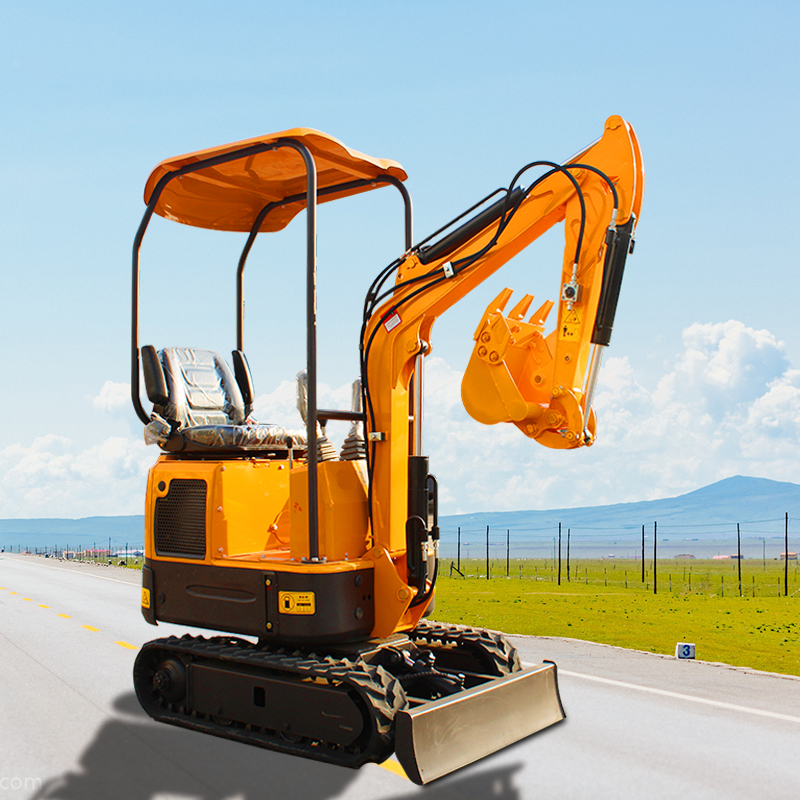
1.2 Ton Mini Excavator Machine,Mini Excavator 1.2 Ton,1.2 Ton Small Excavator,1.2 Ton Micro Excavator
SHANDONG KEN STONE HEAVY MACHINERY CO.,LTD , https://www.chinaexcavator.com